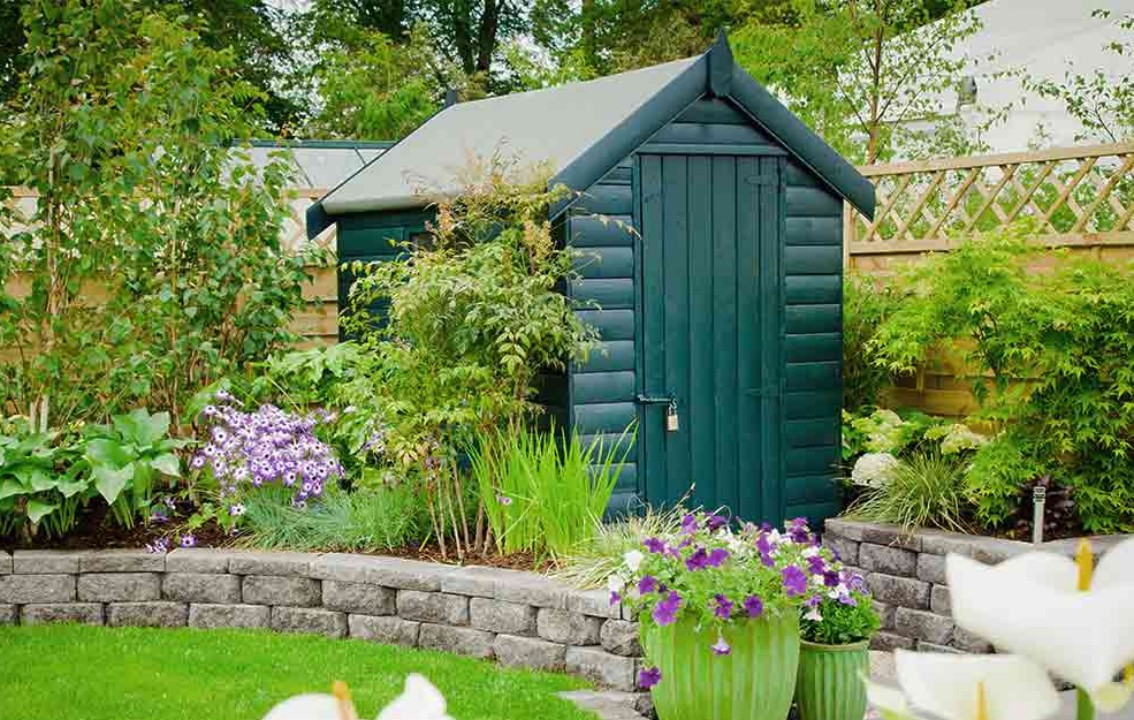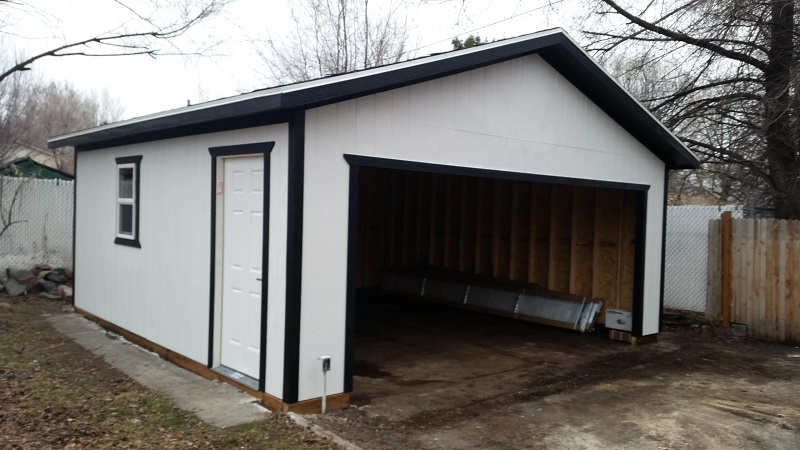Disregarded in terms of home security, garden sheds are prime targets for burglars, as they often hold expensive tools, equipment, and even bikes. Whether your shed is used for storage, DIY projects, or passionate gardening, its security should be your first concern. For professional guidance on improving your shed’s protection, consider reaching out to a locksmith Leeds specialist who can recommend reliable locks and security measures.
Whether your shed is used for storage, DIY projects, or passionate gardening, its security should be your first concern. What occurs when the temperature drops and you have to cope with the extra trouble of a frozen door lock?
Many security problems can be avoided by knowing how to keep your garden shed safe. Let’s explore the best locks, security advice, and techniques for year-round safekeeping of your garden shed.
Why Securing Your Garden Shed is Important
Sheds are the ideal target for burglars, as lawnmowers and power tools, bicycles, and garden equipment are strategically easy to filch and then sell at a high price. Protecting your shed not only bars theft of precious tools, but also gives security to your whole premises.
In addition, during winter, low temperatures, along with moisture freeze the locks, which will then be prone to breakage, thereby compromising your shed.
That is why you have to learn how to unlock a frozen door lock without breaking it, as it will provide you with access to your shed, even in the worst days of winter. This will effectively preserve the security of your property.
Best Locks for Securing Your Garden Shed
The first line of protection for any shed is a strong lock. Not every lock is made equally, which is why you should be highly selective to pick the correct one.
The following are the top lock choices for garden sheds:
1. Padlocks with Hardened Shackles
One basic yet efficient approach to lock your shed is with a strong padlock. Search for padlocks with reinforced steel shackles that resist sawing and cutting.
Cheap, lightweight padlocks must be avoided since they are easily broken. Choose weatherproof solutions, as regular locks are prone to rust. This occurs in cases of exposure to rain and snow.
Select a padlock with a closed shingle pattern for extra security. Bolt cutters won’t be able to reach the shackle and break this kind of lock as its opening is small.
2. Disc Locks
Disc locks are a great choice for sheds because of their design, which provides more resistance to picking and cutting.
These locks are far more secure than standard padlocks because of their spherical form and little shackle exposure. Although they are less prone to freeze in cold conditions, their design makes them easier to defrost should they freeze.
To release a frozen disc lock, gently heat the key with a hairdryer or warm it with a lighter, then carefully insert it. Sheds housing valuable goods will benefit from these disc locks as they offer an additional degree of security.
3. Combination Locks
If you regularly misplace your keys, combination locks might be quite helpful since they replace the need for keys.
Contemporary combination locks are made to be strong, waterproof, and tamper-resistant. They have a drawback, though. Should the lock freeze, the process of thawing will be more difficult without a key to warm it up.
Keep combination locks well-greased using a silicone-based spray to avoid freezing. If you find it frozen, you can try a lock de-icer spray or apply light heat with a warm cloth or hairdryer.
Deicing and applying light heat is sometimes time-consuming, so consider booking an appointment with a professional locksmith so they can take care of the deicing process for you.
4. Smart Locks
Smart locks provide keyless access through codes, smartphone apps, and biometric recognition.
Without the trouble of handling frozen locks, they are handy and offer great security. Should someone try to tamper with your smart lock, it will alert your phone.
Smart locks, however, run on electricity, so you must make sure batteries are kept fresh, especially in colder months.
Though they are an investment, they provide unmatched security and convenience for high-value garden shelters.
Additional Security Tips for Your Garden Shed
Securing your shed goes beyond just choosing the best lock. A few more steps will greatly increase its general security of it and reduce its appeal for burglars.
1. Reinforce the Shed Door
To boost your lock’s strength, utilise other tools to reinforce your door.
Using a security bar, hasp, and staple kit, reinforce the shed door by making sure all fittings are fastened. You can do this by using nuts and washers. This makes forcing doors open more difficult for burglars.
Make sure the hinges are tight. If necessary, think about adding hinge nuts to stop the door from being forced open.
If the door material is weak, look into upgrading into a solid hardwood door as they offer more security compared to other doors, which are frail and hollow.
2. Secure Shed Windows
Windows are considered a weak point in shed security.
To prevent access through your shed, cover them with security bars or wire mesh. Applying frosted or tinted window coatings will also help block vision inside, therefore hiding your valuables from view.
Lockable windows from the inside can help you to further protect windows. Make sure these locks are oiled in winter to prevent freezing.
Should a window lock freeze, carefully defrost it with warm air from a hairdryer before trying to unlock it.
3. Install Motion Sensor Lights
Any security system would be much enhanced by motion sensor lights.
When someone approaches, they turn on automatically to discourage would-be criminals by revealing their movements.
Arrange these lights thoughtfully around your shed, next to the door, and along the path leading to it.
4. Use Ground Anchors and Security Cables
For valuable goods like bikes or lawnmowers, think about strapping them within the shed using ground anchors and security cables.
Even if they break into the shed, these additional precautions make it significantly difficult for burglars to remove these objects.
With bolts and ground anchors, you’ll have a safe position from which you can loop heavy-duty security cables from the floor.
This is another layer of security that guarantees your most valuable tools stay securely in place.
How to Unlock a Frozen Door Lock
Winter months can wreak havoc on even the greatest security systems and understanding how to unlock a frozen door lock helps a great deal with securing sheds.
Warm up the key by using a lighter. Then, gently slide it into the lock. Alternatively, melt the ice inside the lock using a hair dryer or a heat gun.
Keep a lock de-icer close by. These sprays are especially designed to melt the ice fast and are a lifesaver on chilly mornings when you have to swiftly access your shed.
Using a graphite-based lubricant will assist in stopping future freezing and maintain the integrity of the internal mechanisms of the lock.
Steer clear of forcing the lock open. If the lock does not open after trying the previous methods, forceful movement will possibly break it off.
Keep on warming the frozen lock or call a professional locksmith in cases of emergency.
Conclusion
Securing your garden shed aids in building a complete security system that discourages burglars from breaking in and safeguards your assets.
Knowing how to unlock a frozen door lock also guarantees that you never find yourself left without access to your necessary gear and equipment when the cold strikes.
With these tips, your gardening tools will be safe and sound against both natural elements and robbers!





